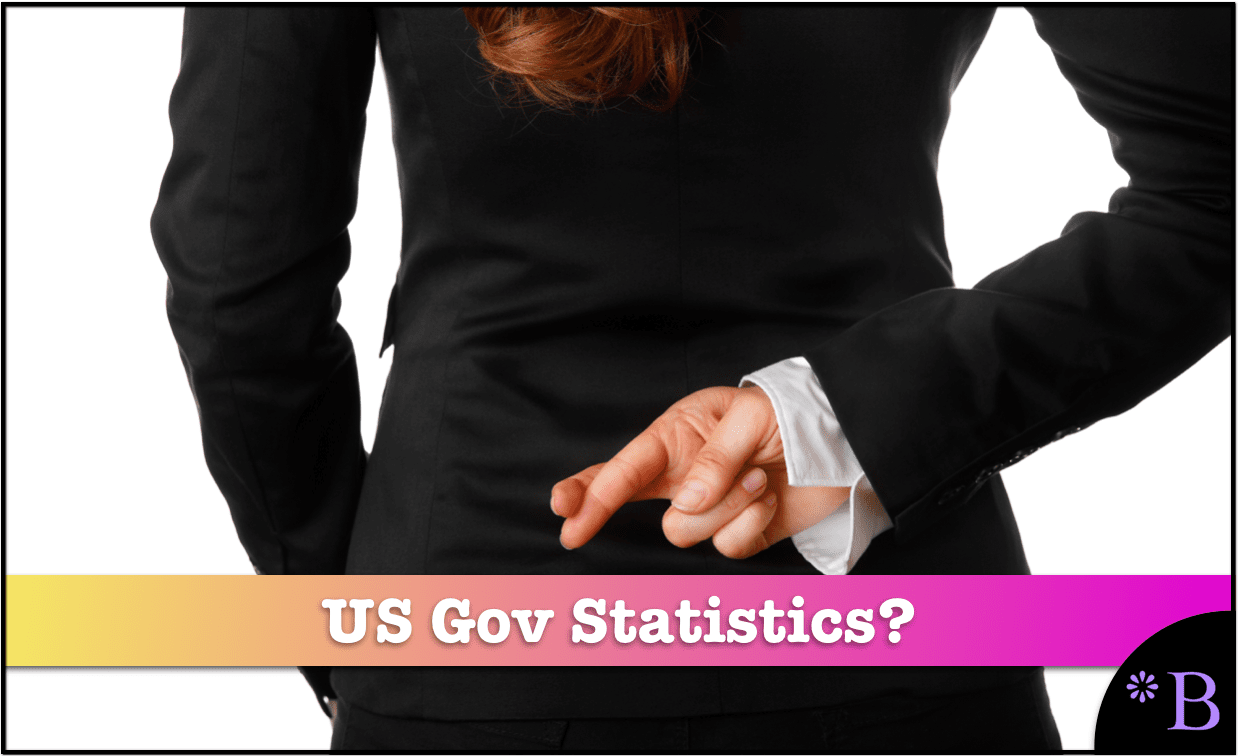Getting Around the US Government’s Fake Economic Statistics
Executive Summary
- Why is a causal forecasting a missed opportunity?
- How to get the right data for causal economic forecasting?

Introduction
One of the missed opportunities in forecasting I have discussed in the past is using macroeconomic trends to adjust forecasts. This type of adjustment would be performed at the top-level of the hierarchy, and in fact, could be done for all products, if the product database in question is sensitive to macroeconomic factors. Most products are, with there being a wide variation with consumer non-durables being on one end of the spectrum, and housing-related industries being on the other.
See our references for this article and related articles at this link.
Where is the Challenge?
The challenge is certainly not on the technology side, as long as you have the right application. The best way to apply a top-down macroeconomic factor is by attribute. For instance, the overall product database can be coded something like the following:
- Macro-Economic Affected Products
- Macro-Economic Semi-Affected
- Macro-Economic Unaffected Products
The macroeconomic factor that is used (unemployment, GDP growth, housing starts, etc..) can then be applied to varying degrees in the first two categories, and not at all in the third category. This, of course, is only one example for demonstration purposes. There could be ten different categories like this, and multiple macroeconomic factors used. For instance, if various macroeconomic factors were used, the coding could be the following:
- Unemployment Statistics Applied
- GDP Growth Applied
- Housing Starts Applied
- No Macro-Economic Factor Applied
As soon as this coding is performed, the descriptions added would appear right in the application data view, so that it is easy to apply the increase or decrease through a top-down forecast.
Getting The Causal Data
So, the technology exists to do this quickly. However, the problem lies in getting the right data. This is because the data released by the government has been so adjusted for political purposes that it is no longer a reflection of what is happening in the economy. These are the descriptive statistics that are quoted in news programs that we collectively used to measure the health of the economy. And even the fairness of the economy and they have been helplessly jerry-rigged. A few examples are listed below:
- The government knows that the unemployment rate is a statistic with significant implications. Therefore multiple administrations have adjusted the number from its original calculation to make it look as low as possible.
- Inflation controls the cost of living increases that are paid to employees by both the government and private companies. To minimize the cost of increases, institutional power (both public and private) has an incentive to use a calculation method that reduces the inflation rate.
These are just two examples of manipulated statistics, but there are many others. In what appears to be a constant attempt to control public perception, few government statistics have not been “adjusted” over the past five decades. If a forecast adjustment model is based upon false economic statistics, it will not be effective, and will gradually be seen as a non-value add. One wonders how many macroeconomic adjustments to forecasts have been abandoned because of this simple fact. Walter J. Williams has the following story which describes this exact thing:
One of my early clients was a large manufacturer of commercial airplanes, who had developed an econometric model for predicting revenue passenger miles. The level of revenue passenger miles was their primary sales forecasting tool, and the model was heavily dependent on the GNP (now GDP) as reported by the Department of Commerce. Suddenly, their model stopped working, and they asked me if I could fix it. I realized the GNP numbers were faulty, corrected them for my client (official reporting was similarly revised a couple of years later) and the model worked again, at least for a while, until GNP methodological changes eventually made the underlying data worthless. Despite minor changes to the system, government reporting has deteriorated sharply in the last decade or so. – Walter J. Williams
This lead Walter to develop ShadowStats.com, which adjusts the government’s statistics to be realistic, rather than to meet political goals.
A few examples of the differences between what ShadowStats.com calculates for major government economic statistics and the official government released statistics are listed below:
- The unemployment rate has been at roughly 9% for some time. However, ShadowStats shows it as approximately 23%. This is due to several factors, such as workers who leave the workforce because they have been looking for so long they are discouraged. US Government statistics do not count these people. Almost all the recent reduction from 9% to 8.5% unemployment was due to people leaving the workforce, yet it was still celebrated in the media. Politicians prefer to keep this number artificially low to decrease voter dissatisfaction.
- The average inflation rate is currently shown as 4% per year. However, ShadowStats estimates a full 2.5 percentage points higher, or 6.5%. Furthermore, ShadowStats shows this differential for years. If a person made $50,000 in 2010, they would need to have made $53,250 in 2011 and $56,711 in 2012 for their standard of living just to be maintained. Most companies tend to give out 3% raises, so every year, unless a person is promoted, or moves to a new job, companies pay less for their employees. A primary way they do this is by colluding with the government (through various conservative think tanks such as the Heritage Foundation or the Hoover Institute) to keep the real inflation rate hidden.
Conclusion
The US Government’s economic statistics have been manipulated over time. Now they are no longer a reliable gauge for the state or performance of the economy. Any company which desires to use macroeconomic variables will need to pay a source like ShadowStats to get numbers that can be used in a causal model to adjust the product forecast.